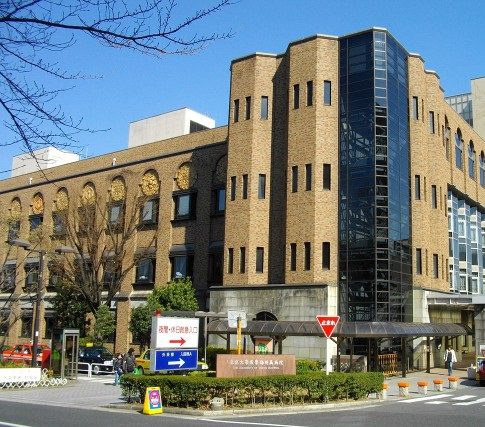The University of Tokyo Hospital, Tokyo, Japan
About Hospital
The University of Tokyo Hospital was originally established in 1858 as the Kanda Otamagaike Vaccination Center, which, after a series of name and organizational changes, was newly built in the former Kagahan residence area in Hongo Motofuji-cho in 1876 and renamed the University of Tokyo School of Medicine Affiliated Hospital the following year. The institution thus has a long history of 160 years and is one of Japan’s leading university hospitals. Since the early days of modern medicine in Japan, the University of Tokyo Hospital has fostered countless distinguished healthcare professionals, contributing to the development of medicine and medical care as well as medical education.
University hospitals, needless to say, have three missions: medical care, education, and research. In pursuit of these missions, the University of Tokyo Hospital upholds the basic philosophy of “contributing to the advancement of clinical medicine and the cultivation of healthcare professionals to provide each patient with the best medical care.” To fulfill this vision, the hospital aims to (1) provide medical care in partnership with the patients, (2) provide safe medical care, (3) develop advanced medical technology, and (4) cultivate excellent healthcare professionals.
Today, the hospital annually cares for a total of 700,000 outpatients (2,900 a day on average) and 360,000 inpatients (980 a day on average) and every year performs over 11,000 surgeries, one of the highest figures among national university hospitals.
Sustaining our all-encompassing medical care services are a total of 4,000 staff members engaged in various roles, including doctors, nurses, pharmacists, registered dieticians, physical therapists, occupational therapists, clinical radiologists, clinical laboratory technicians, clinical engineers, and administrative staff. Patients discharged from this hospital are of diverse ages, ranging from very young patients aged between zero and nine, accounting for 7% of all patients, to elderly patients over 80 years of age, accounting for 13%, which testifies to how deeply rooted the hospital is in its local community.
We will continue to step up our commitment in the areas of perinatal care, pediatric services, transplantation therapy, cancer care, and intensive care for critical cases, which have been and will be the areas where we play significant roles. Furthermore, we must also strengthen our initiatives in addressing illnesses unique to older patients, given the progressive aging of our society.
University hospitals have three missions: medical care, research, and education. To fulfill these missions, the University of Tokyo Hospital has set a goal “to provide medical care in partnership with patients, to provide safe medical care, to develop advanced medical technology, and to cultivate excellent healthcare professionals” based on the philosophy that the hospital exists to “contribute to the advancement of clinical medicine and the cultivation of healthcare professionals to provide each patient with the best medical care”.
As requested by society, to honor our philosophy and goals and serve as the core center of Japan’s medical science and patient care, an action plan entitled “Aim of the University of Tokyo Hospital” is established every two years when new executives are appointed. This plan consists of actions and goals that must be carried out and accomplished, in which assessment is made by repeating the plan-do-check-action (PDCA) cycle based on the interim and final evaluation.
The “Aim of the University of Tokyo Hospital: 2015-2016 Edition” has been established based on the draft proposed by five vice directors, each of whom is responsible for medical care, research, education, human resources, or hospital management, followed by a series of discussions among hospital executives. The University of Tokyo Hospital comprises five principal initiatives, each with five plans, totaling 25 action plans.
1. Initiatives to improve medical services and organizational structure to safely provide the most up-to-date medical care in the advanced acute medical settings;
2. Initiatives to establish a world-leading center for clinical medical research and advanced medical care technology development;
3. Initiatives to cultivate healthcare professionals who will become the leaders in the next-generation clinical medical research and patient care;
4. Initiatives to efficiently allocate teaching staffs to achieve well-balanced missions of medical care, research, and education; and,
5. Initiatives to establish a highly flexible and mobile organizational structure and to strengthen the financial basis from a long-term perspective are being implemented.
The redevelopment of hospital facilities is a particularly important event, as it is close to the final stage of its early phase. In FY2015, construction of Clinical Research Building A (Clinical Research Center) Phase I will be completed, and the Molecular Life Innovation Building will be fully operational. We must smoothly carry out the relocation while maintaining our research function to the best of our ability.
In addition, preparation must be made within the next two years for the opening of Inpatient Building B (phase II construction of Inpatient Building), which is planned to be operational in FY2017. The key to accomplishing both events successfully is the establishment of a streamlined organization to enhance medical services and research as well as strengthening the financial basis. Additionally, the restructuring of our system to further ensure the reliability of clinical research and medical care is at a critical development point.
Team and Specialities
Infrastructure
Location
Hospital Address
University Hospital of Tokyo, Japan
7 Chome-3-1 Hongō, Bunkyo City,
Tokyo 113-8655,
Japan
